Genre: Pachinko Developer: I.S.C. Publisher: Soft Vision Players: 1 Released: 1992
Kuunyan is the Japanese word for a young Chinese girl, but what is pachinko? Pachinko is a very popular gambling game that has originated in Japan and has been popular there for a long time. It will suffice to say, without going into many details, that there are numerous pachinko “arcades” (called parlors) and an astounding number of different machines. Think about pinball but vertical. Fill the playfield with nails, add the occasional slot machine feature and give it steroids! Also, gambling: you pay for your balls of steel, and you’ll use more than a hundred of these each minute… and noise, a lot of noise… and cigarette smoke.
In every pachinko machine, the objective is to activate the “fever” by shooting in a certain spot. If you can do that, this feature will typically go through several rounds (usually 15), through a shock of sounds and lights, unless you’re playing an old, purely mechanical machine! Finally getting the fever to activate is already a success, as the machine will start paying out a sizeable amount of balls that can be exchanged for money (although it has to be done in another building to circumvent the law against gambling, but that’s another matter). At the center of a machine is where the fever’s critical spot is located, and these are categorized usually as either hanemono (airplane kind) ones, or slot ones. The hanemono ones usually consist of a mechanical toy in the center of the machine: you open up its wings with a dedicated shot, get some balls in it, and hope you get to fever mode. Slot versions, on the other hand, require you to score three of the same numbers/objects in order to achieve fever. The variations are many; they evolved into digipachi machines, and into the modern day pachislots. Video games, obviously taking direct inspiration from real machines, often create duplicates of popular ones, so it’s not unusual to see the same hanemono designs reused across various video games.
Now that you know what pachinko is, you might be wondering why it spawned only one game on what was a successful Japanese console. The reason is likely due to the disparity between the Mega Drive’s popularity in Japan and in the rest of the world. It makes sense, in retrospective, that the Super Famicom would get more pachinko titles due to it being more successful in Japan, and so Mega Drive releases would try to cater to more of a western audience, which would mean no pachinko. (For the record, there are 48 pachinko games on Super Famicom, more or less.)
It was however a good business move, by Soft Vision, to release a pachinko game on the Sega console, as smaller developers kept releasing “minor” games on the Nintendo platform, the customers wouldn’t actually consider buying them because they had already too many bigger titles piquing their interest; that way, in some stores, some of these smaller games didn’t even sell a copy. Although it was probably easier to sell copies of Pachinko Kuunyan on the Mega Drive rather than on the Super Famicom, it is also of note that I.S.C. was the developer for other pachinko games on Japanese home computers such as the NEC PC-98 and the Sharp X68000 and would have been more familiar with developing on the Mega Drive due to hardware and coding similarities than on the Super Famicom.
I mentioned the popularity of the Mega Drive in Japan compared to that of the Super Famicom. It has to be said though, that Sega’s 16-bit console did have its own fans who, in a way, you would be accurate to define as “hardcore” and aren’t Mega Drive games more hardcore, as in more arcade-like or just more difficult on average? It comes as little surprise, then, that Pachinko Kuunyan is actually a pretty challenging game to beat. One must conquer a grand total of 101 machines in order to clear it entirely.
Pachinko Kuunyan incorporates adventure/RPG elements as it tells the story about a girl named Len who is searching for her missing father, a teamaker named Lenlen, on a small Chinese island. There were several pachinko parlors here, which attracted an evil panda who came and bought the town! He opened his own pachinko parlor, and townspeople who entered went missing. Lenlen went to stop the panda. Having heard the stories about this pachinko parlor, Len, our protagonist, set out on a voyage as soon as she turns 18, picking up the trail in nearby towns. Apparently, she is also somehow fulfilling a prophecy. Some years prior, it was predicted by a diviner that a girl from the South would have come, a girl who contained the power of pachinko…
Soft Vision’s release does a great job at introducing the game’s setting to its player. The presentation is, in fact, very nicely delivered. Upon starting, you are greeted with a Chinese-like background music as the many images tell you the story of the game through a pretty long intro. With a new game, we get a little animated artwork of child Len, turning 18-years-old in three frames, further proving that extra care went into presenting the game in an enticing way. And it just keeps proving that same point as you play: you’re immediately brought into a nice looking town where you can walk around as Len, with the game’s killer soundtrack by Hideki Suzuki making the “search” for your father very exciting from the start.
As the only game of its genre on Sega’s 16-bit system, Pachinko Kuunyan takes good advantage of the hardware, or at least the developers’ familiarity with it, without however doing anything truly exceptional with it. Of note, however, are the balls’ physics. These are nicely implemented, and the developers made it so that every nail patch you can examine has one of four settings, with the fourth one allowing for the most chances of the balls making it through the desired course. Both this and the collision effects were very nicely coded, and as far as realism goes, Pachinko Kuunyan really “nails it” (ha!).
Even with some noise on the drums samples, the music score is very well varied and hardly gets old, even without having any song loop longer than one minute. You wouldn’t want to play a pachinko title for many hours without a good music score. There is good style in the visual department, as well, particularly the way the male sprites are slightly block-shaped, as opposed to the cute female ones. It’s quite unique. The game does, however, fall short on colors. There isn’t too much variety, and although everything looks nice, many of the machines’ artwork take a hit from the color limitation, having to display the user interface and both the inside and the outside of the machine all at the same time. In most cases, extra work in the way of dithering or just shading would have gone a long way.
Throughout the game, players will experience 20 different machines. 12 are unique, while the other eight are welcomed re-skins of other machines already encountered. Even with a large variety of machines to choose from, to beat such a long game one will have to repeatedly beat the easiest machine available in the current city. Although it can feel rewarding to beat all 20 machines at least once, it is in no way required, and the game ultimately feels like a big grind, which, mind you, is part of what pachinko is, but this video game adds quite a large-scale setting to that.
Awards await the dedicated, though, as players will get amusing cut scenes (the game has 27 in total) at preset milestones, always following a clue leading to finding your father. After clearing the first town, Len finds the handmade toothpick Lenlen used to carry around. As her first clue, this is actually a vital item which allows her to lock the knob in place, effectively letting the player play the game without holding the controller. At first, the way the knob would slowly go back and lose power was an interesting mechanic to keep the player aware of how the ball were being aimed, but after 20 machines cleared and 81 more to go, though, the lock feature is very appreciated.
Players will find themselves entering their password on the continue screen many times if they keep pursuing Len’s father, without suspecting the game actually has more than 20 predefined secret passwords that can be entered in that screen. With these, debug modes are accessible, and these even have their own background music! Every cut scene becomes accessible, and so does every machine’s artwork, unhindered by nails and mechanical toys. Other interesting effects range from doubling walk speed to activating fever automatically.
Pachinko Kuunyan stands out as the only game of its kind on the Mega Drive, but it also tries to add more to the pachinko formula. There is currently no translation, so it might be too complex for most players, but I would definitely recommend giving it a try. You won’t find another game like this on your Mega Drive!
SCORE: 7 out of 10


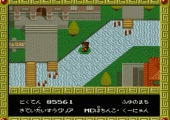
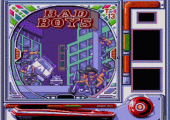
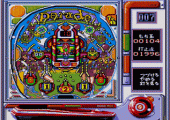
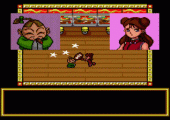
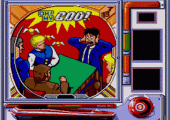
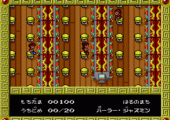


Recent Comments